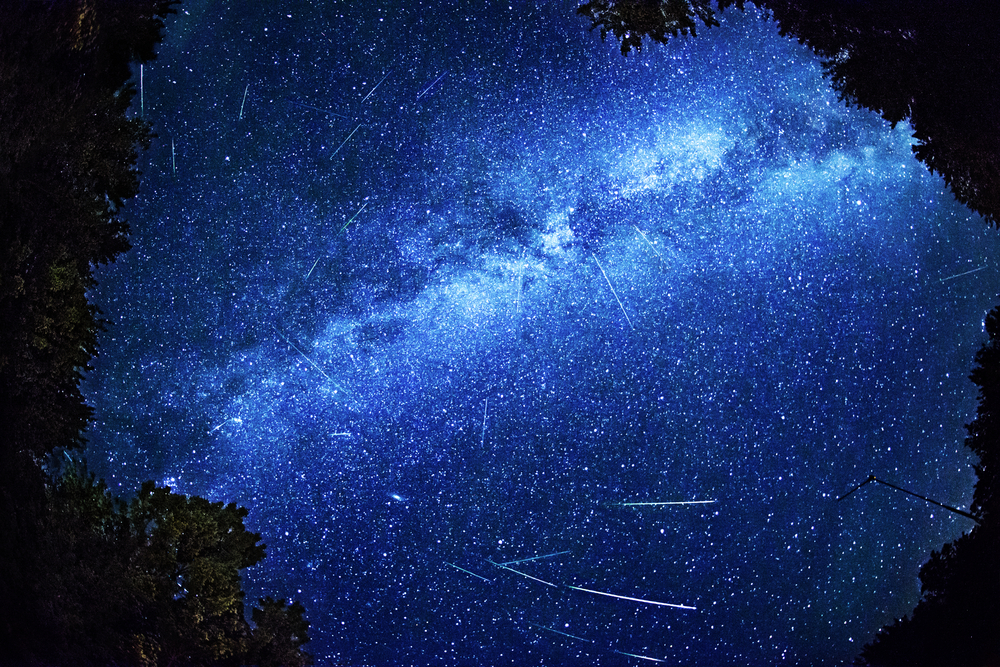
Celestial Showtime!
Posted on August 7, 2020
Wow, it’s August! How did that happen so fast? If you are a stargazer, August is a pretty exciting month because that means it’s time for the Perseid meteor shower, considered by many astronomers to be the best and most consistent meteor shower year after year.
Let’s start with the basics. What exactly is it, anyway? Each summer during its orbit around the sun, Earth passes through the tail of the Swift-Tuttle Comet (read more about comets in our previous post on Comet Neowise). Debris from the comet enters our atmosphere, at which point it burns up, creating a dazzling array of shooting stars, or meteors, that are visible at night.
That’s right, “shooting stars” have nothing at all to do with actual stars. They are instead bits of dust and rock. In space, they are called “meteroroids.” When they hit Earth’s atmosphere, burn up and streak across the sky (and we do mean streak! They are traveling at about 37 miles per second!), they are deemed “meteors.” If they happen to make it all the way to the earth’s surface without completely burning up, they become “meteorites.” Don’t worry about Perseids meteors crashing to Earth though. Most of them are way too small, about the size of a grain of sand.
So, when can you see it? The Perseid meteor shower actually began in mid-July and lasts through late August. But its peak is coming next week, on August 11, 12 and 13. This is when Earth is passing through the most dense area of debris in the tail of Swift-Tuttle. Find the darkest, most expansive bit of sky you can, and look towards the north. If you’re really into astronomy, you’ll notice that the meteors appear to be originating from the constellation Perseus, which is how the shower got its name.
The best time to see them in in the pre-dawn hours. As Earth rotates, the side facing the direction of its orbit around the sun picks up more of the comet’s debris—and from down here on the surface, that part of the sky is directly overhead around dawn.
When conditions are perfect, it is possible to see up to 150 shooting stars per hour flitting across the sky. This year, the moon will be entering its last quarter phase at the peak, which will be a little brighter than you’d like in order to see a spectacular show… but it will still be pretty good! You can still expect to see as many as 40 or 50 per hour at the peak… and that’s not nothin’, right? Plus it will be waaay better than last year, when the moon was darn near full during the peak.
So next week, set your alarm for dark-thirty, grab a cup of coffee, get outside, and look up. Let us know if you see the Perseids this year, and if you get pictures, we’d love to see them!




















